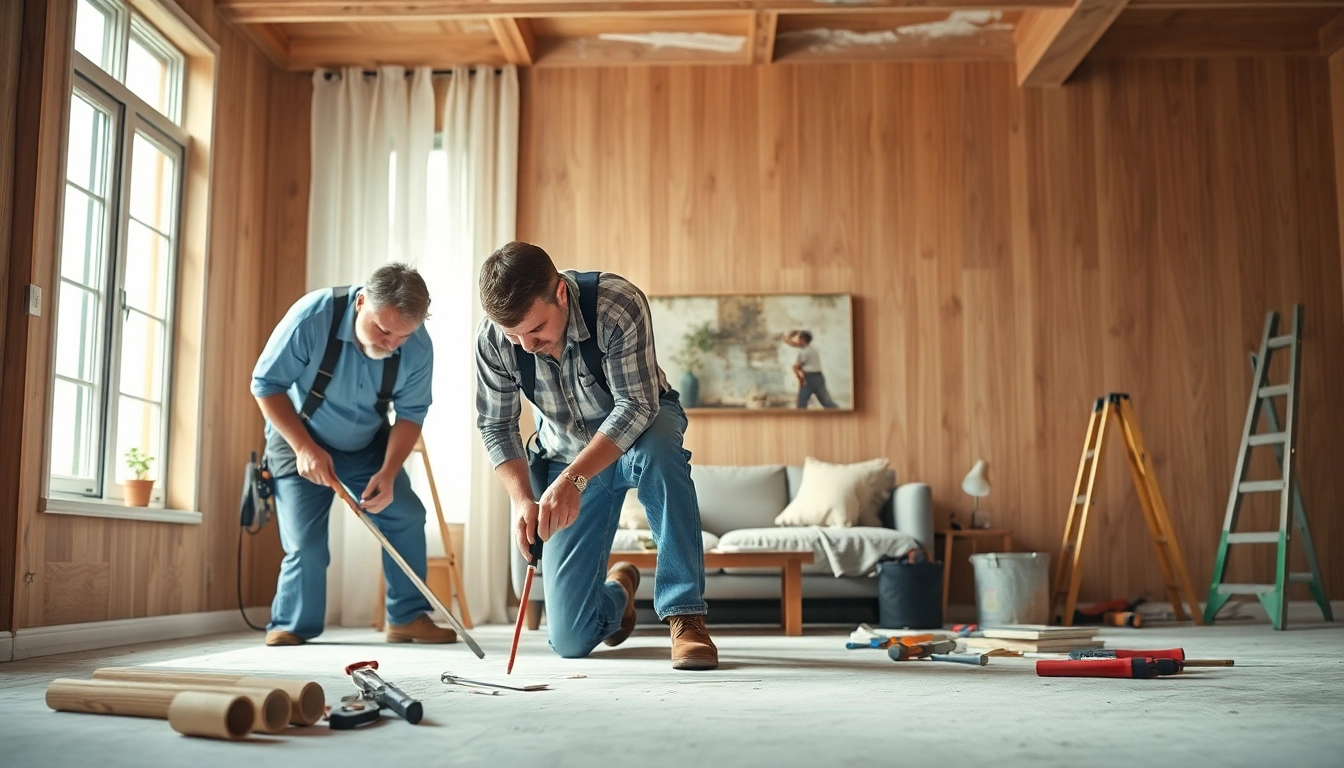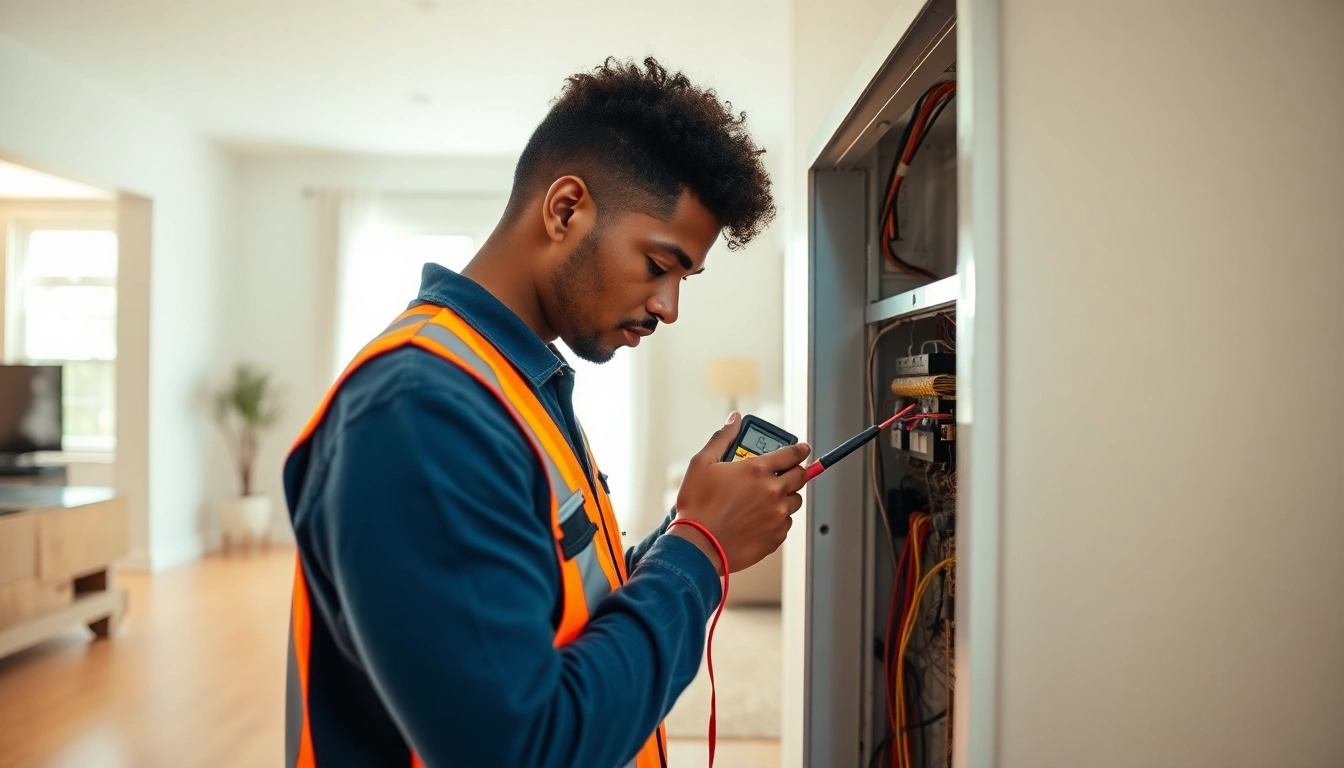Understanding Home Restoration
What is Home Restoration?
Home restoration refers to the process of returning a home to its original condition or making improvements while preserving its historical value. This process can encompass various activities, including repairing damages from fire, water, or pests, updating systems like plumbing and electrical work, and even revitalizing the aesthetic appeal of a home through renovation. Home restoration can vary greatly in scope, involving anything from cosmetic changes, such as painting and reflooring, to major overhauls that may include structural adjustments.
Importance of Home Restoration in New York NY
In a bustling metropolis like New York NY, home restoration plays a critical role not just in the lives of residents but also in the broader community. Older homes carry a rich history and character that contributes to the unique architectural landscape of the city. Restoring these homes helps maintain the cultural heritage and can also significantly increase property values. Moreover, with environmental concerns on the rise, restoration projects often emphasize sustainability and eco-friendly practices, further benefiting the community by promoting energy efficiency and reducing waste.
Key Restoration Tools and Materials
A successful home restoration project requires an assortment of tools and materials tailored to the job at hand. Key tools include hammers, screwdrivers, drills, and saws, which are fundamental for any restoration tasks. More specialized tools, such as moisture meters and thermal imaging cameras, can be crucial for identifying hidden damages, particularly in older buildings. In terms of materials, selecting high-quality products such as reclaimed wood, durable paints, and long-lasting fixtures can enhance the aesthetic and functional integrity of the project. Each choice of tool and material reflects the restoration’s goals, whether it’s aesthetics, structural integrity, or sustainability.
Common Home Restoration Challenges
Identifying and Addressing Damage
One of the foremost challenges in home restoration is accurately identifying the extent and type of damage. Problems like mold, water leaks, or structural issues may hide behind walls or under floorboards, requiring thorough assessment techniques and sometimes professional help. Once identified, addressing these issues in a timely manner is crucial. Undetected damages can escalate, leading to more significant problems and higher restoration costs. Implementing regular home inspections can help homeowners catch issues early and prevent extensive damage.
Dealing with Permits and Regulations in New York NY
Home restoration in New York NY often involves navigating a complex web of permits and regulations. Many neighborhoods have historical preservation guidelines, requiring homeowners to meet specific standards when restoring older buildings. Additionally, renovations affecting structural integrity or altering the use of a space might need permits from the city. Familiarizing oneself with these requirements early on can save considerable time and avoid penalties. Consulting with local authorities or hiring professionals knowledgeable about these regulations can lead to a smoother restoration process.
Common Missteps to Avoid During Restoration
When embarking on a restoration project, it’s essential to avoid common missteps. Underestimating costs can lead to budget overruns and incomplete projects. Similarly, neglecting to create a comprehensive plan can cause delays and miscommunications throughout the project. It’s also vital not to rush the restoration process, as shortcuts can compromise longevity and the overall quality of work. By conducting thorough research, budgeting wisely, and planning meticulously, homeowners can mitigate these risks and enhance their restoration outcomes.
Best Practices in Home Restoration
Strategies for Preserving Architectural Integrity
Preserving the architectural integrity of a home during restoration requires a thoughtful approach that respects the original design elements. Key strategies include researching historical styles and materials to ensure authenticity, as well as consulting with preservation specialists who can offer insight into best practices. Retaining original features, like moldings and fixtures, while making necessary updates can create a harmonious balance between old and new. Using materials similar to the original in texture and appearance can maintain continuity and respect the home’s history.
Choosing the Right Materials for Your Project
Selecting materials wisely is foundational to any home restoration effort. The use of environmentally friendly and sustainable materials has gained popularity, not only reducing the project’s carbon footprint but often enhancing durability and efficiency. For example, opting for reclaimed wood not only adds character but also minimizes environmental impact. It’s essential to consider the specific needs of each project, such as climate resilience and aesthetic appeal, to ensure that the chosen materials contribute positively to the space.
Hiring Professional Help vs. DIY in New York NY
In deciding whether to hire professionals or undertake restorations as a DIY project, homeowners must evaluate their skill sets, project complexity, and budget. Professional contractors bring invaluable experience, intricate knowledge of building codes, and access to professional-grade tools. However, DIY efforts can save money and provide personal satisfaction, especially for smaller projects. Nonetheless, understanding personal limitations is critical; attempting complex tasks without sufficient knowledge can lead to costly mistakes. Weighing these factors helps determine the best course of action for a successful restoration.
Innovative Restoration Trends
Eco-Friendly Restoration Practices
With an increasing focus on sustainability, eco-friendly restoration practices have become a priority for many homeowners. Incorporating energy-efficient systems, such as solar panels and high-efficiency HVAC units, not only reduces utility costs but also enhances environmental responsibility. Using recycled materials, implementing green insulation options, and employing non-toxic paints are vital practices in eco-conscious restoration. By embracing these trends, homeowners contribute to a sustainable future while enhancing the value and livability of their homes.
Smart Home Technologies in Restoration
The integration of smart home technologies is transforming restoration practices. Modern technology allows homeowners to enhance the functionality and appeal of their homes while ensuring efficient energy use. Smart thermostats, lighting systems, and security features can be integrated into the restoration plan, providing added comfort and convenience. Moreover, these smart upgrades can appeal to potential buyers, adding significant value to the restored home. Ensuring that technology aligns with the home’s aesthetic and historical character is essential for maintaining a cohesive design.
Modern Design Approaches for Traditional Homes in New York NY
Blending modern design approaches with traditional homes is an art that allows homeowners to showcase contemporary elements while honoring historical architecture. The use of open floor plans, modern amenities, and minimalist aesthetics juxtaposed with classic features can create visually stunning results. Innovations in lighting, kitchens, and bathrooms can enhance functionality without compromising the character of the home. Successful restoration considers how new design trends can coexist harmoniously with established architectural styles, allowing the uniqueness of each home to shine through.
Measuring Success in Home Restoration
Key Performance Indicators for Restoration Projects
To gauge the success of a home restoration, homeowners should establish key performance indicators (KPIs) that reflect both the quantitative and qualitative outcomes of the project. KPIs might include completion time against projected timelines, budget adherence, and an evaluation of quality through material performance. Customer satisfaction surveys can provide insights regarding the aesthetic appeal and functionality of the restored spaces. Tracking these metrics not only aids in assessing current projects but also informs future restoration efforts.
Collecting Customer Feedback in New York NY
Gathering customer feedback post-restoration is vital for understanding the success of the project and areas for improvement. Utilizing tools such as surveys or interviews allows homeowners to capture insights on renovation satisfaction and areas that may need attention. This feedback can be critical for industry professionals aiming to enhance service quality and adapt to client needs more effectively. Sharing positive feedback and testimonials can also contribute to building a community of trust within the local restoration market.
Follow-Up Care and Maintenance Tips
After a restoration project is complete, ongoing care and maintenance are crucial to ensure the longevity of the work. Establishing a regular maintenance schedule that includes inspections of key elements like roofing, plumbing, and electrical systems can help catch potential issues early. Homeowners should also familiarize themselves with specific care requirements for newly installed or restored features, such as tailored cleaning techniques for sustainable materials or regular servicing of smart technologies. By prioritizing maintenance, owners can protect their investments and enjoy their restored homes for generations to come.



